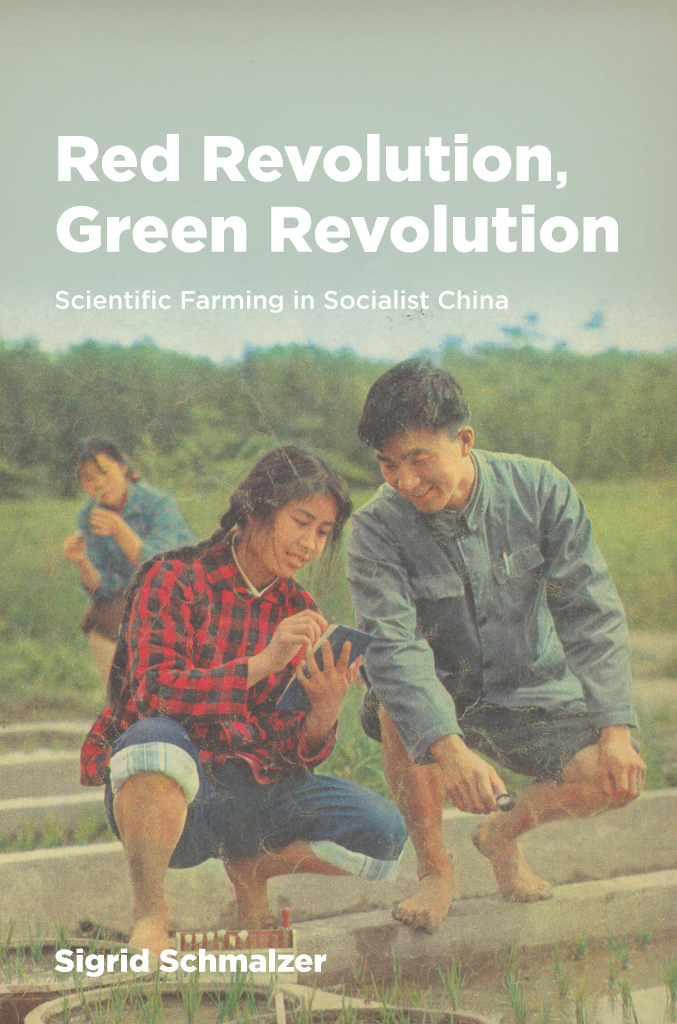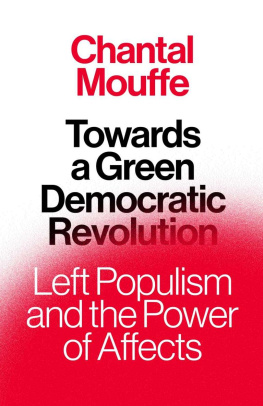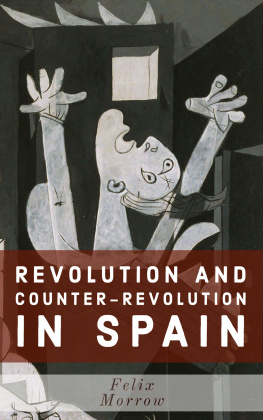Sigrid Schmalzer - Red Revolution, Green Revolution
Here you can read online Sigrid Schmalzer - Red Revolution, Green Revolution full text of the book (entire story) in english for free. Download pdf and epub, get meaning, cover and reviews about this ebook. year: 2016, publisher: University of Chicago Press, genre: Politics. Description of the work, (preface) as well as reviews are available. Best literature library LitArk.com created for fans of good reading and offers a wide selection of genres:
Romance novel
Science fiction
Adventure
Detective
Science
History
Home and family
Prose
Art
Politics
Computer
Non-fiction
Religion
Business
Children
Humor
Choose a favorite category and find really read worthwhile books. Enjoy immersion in the world of imagination, feel the emotions of the characters or learn something new for yourself, make an fascinating discovery.
- Book:Red Revolution, Green Revolution
- Author:
- Publisher:University of Chicago Press
- Genre:
- Year:2016
- Rating:4 / 5
- Favourites:Add to favourites
- Your mark:
- 80
- 1
- 2
- 3
- 4
- 5
Red Revolution, Green Revolution: summary, description and annotation
We offer to read an annotation, description, summary or preface (depends on what the author of the book "Red Revolution, Green Revolution" wrote himself). If you haven't found the necessary information about the book — write in the comments, we will try to find it.
Red Revolution, Green Revolution — read online for free the complete book (whole text) full work
Below is the text of the book, divided by pages. System saving the place of the last page read, allows you to conveniently read the book "Red Revolution, Green Revolution" online for free, without having to search again every time where you left off. Put a bookmark, and you can go to the page where you finished reading at any time.
Font size:
Interval:
Bookmark:

Published with support of the Susan E. Abrams Fund
SIGRID SCHMALZER
The University of Chicago Press
CHICAGO & LONDON
Sigrid Schmalzer is associate professor of history at the University of Massachusetts, Amherst. She is the author of The Peoples Peking Man, also published by the University of Chicago Press, and coeditor of Visualizing Modern China.
The University of Chicago Press, Chicago 60637
The University of Chicago Press, Ltd., London
2016 by The University of Chicago
All rights reserved. Published 2016.
Printed in the United States of America
25 24 23 22 21 20 19 18 17 16 1 2 3 4 5
ISBN -13: 978-0-226-33015-0 (cloth)
ISBN -13: 978-0-226-33029-7 (e-book)
DOI : 10.7208/chicago/9780226330297.001.0001
Library of Congress Cataloging-in-Publication Data
Schmalzer, Sigrid, author.
Red revolution, green revolution : scientific farming in socialist China / Sigrid Schmalzer.
pages cm
Includes bibliographical references and index.
ISBN 978-0-226-33015-0 (cloth : alk. paper) ISBN 978-0-226-33029-7 (e-book) 1. Communism and agriculture. 2. Agriculture and stateChina. I. Title.
HX 550. A 37 S 36 2016
338.1851dc23
2015017858
This paper meets the requirements of ANSI / NISO Z 39.481992 (Permanence of Paper).
In memory of my father, Victor Schmalzer (19412015)
Pigs Are Fertilizer Factories as well as Treasure Bowls |
Fertilizing the Cotton Fields |
Spraying insecticide by airplane |
Enemies and Friends in the Vegetable Garden |
Self-Reliance; Practice Scientific Research with Diligence and Frugality |
Eight-Character Charter, 1959 |
The Eight-Character Charter for Agriculture Is Best, 1974 |
Chinese graduate students in entomology, University of Minnesota |
Pu Zhelong and Li Cuiying |
Displaying ducks at Big Sand Commune |
Pu Zhelong playing the violin |
Pu Zhelong at Big Sand Commune |
Yuan Longping |
The three-line method of producing hybrid rice |
Yuan Longping with his violin |
From the Garden of the Middle Kingdom (three film stills) |
The University Has Moved to Our Mountain Village |
Scientific Farming |
Old Party Secretary |
Young men handling insecticides |
Cheng Youzhi researching the use of sterility in wheat |
Cultivate Meticulously |
Lin Chao learning from an old peasant |
The Future Countryside |
The layered history of an educated youth |
Pu Zhelong with youth at Big Sand Commune |
1971 conference on agricultural scientific experiment in Xin County, Shanxi |
Emptying Out, the Suffering of the Countryside |
Thanks to Wufeng, I Learned Scientific Breeding |
Local chickens in Huarun Baise Hope Town |
Beyond these concerns lies a more general and less well-recognized problem produced by, and implicit in the very concept of, the green revolution. It is the problem of how to understand the relationship between science and technology on one hand and sociopolitical transformation on the other. Does science offer an alternative to political solutions for the worlds problems, as the US architects of green revolution intended? Or is science inseparable from its political context, as Marxists have long argued and scholars in the field of science and technology studies continue to maintain?
The history of the green revolution as it unfolded in socialist-era China represents a critical piece of the puzzle we must assemble to address these and other pressing questions about our common future. New agricultural technologies have been of central importance in the transformation of Chinas Moreover, it facilitates a needed critique of the fundamental assumptions about science and society that undergirded the green revolution, and that continue to undergird the dominant political ideology of the world today.
The goal of this book is to bring into view Chinas unique intersection of red and green revolutions. Socialist Chinese agricultural science will not serve as a model: it is always important to exercise caution when looking to history for models, and socialist China offers perhaps even more than the usually large set of complications found in any real society. But neither will it be merely a cautionary example: the Mao era was not the simple picture of totalitarian oppression and ecological disaster that is presented in many accounts available in English. Rather, in this book socialist Chinese agricultural science will be called upon to challenge dominant assumptions about what constitutes science, how science relates to politics, who counts as a scientific authority, and how agriculture should be organized or transformed. In the process of stretching our minds to grasp the different answers to these questions offered by socialist Chinese history, along with the limits and consequences of those answers, we will be better able to think critically and inspirationally about the prospects for agriculture and science in our own times and places.
In 1968 the director of the US Agency for International Development (USAID), William Gaud, coined the term green revolution. He said:
Record yields, harvests of unprecedented size and crops now in the ground demonstrate that throughout much of the developing worldand particularly in Asiawe are on the verge of an agricultural revolution.... It is not a violent Red Revolution like that of the Soviets, nor is it a White Revolution like that of the Shah of Iran. I call it the Green Revolution.
The significance was not lost on observers in China, where Mao Zedong had brought a red revolution to victory in 1949, and where, still under his leadership, an even more tumultuous transformation had begun under the banner of Cultural Revolution (19661976). In 1969, Peoples Daily bemoaned the pursuit of green revolution in India, defining it as the so-called agricultural revolution that the reactionary Indian government is using to hoodwink the people. The article made clear just why the green revolution represented a reactionary choice: the Indian Minister of Food and Agriculture had reportedly cried out in alarm that if the green revolution... does not succeed, a red revolution will follow.
Does this mean that socialist China opposed the new technologies of the green revolution or agricultural modernization more generally? No. Contrary to common perception, even the most radical leaders in socialist China embraced the causes of science and modernization, and so in some important ways, the green revolution in red China looked strikingly similar to the green revolution as Gaud imagined it. The goal there as elsewhere was to transform the material conditions of agriculture through mechanization, the introduction of new seeds, and the application of modern chemicals in order to increase production and raise standards of living. The organization of these efforts in China was shaped in part by Soviet experience: Soviet advice influenced much of socialist Chinas 1950s work in science and economic development.
Font size:
Interval:
Bookmark:
Similar books «Red Revolution, Green Revolution»
Look at similar books to Red Revolution, Green Revolution. We have selected literature similar in name and meaning in the hope of providing readers with more options to find new, interesting, not yet read works.
Discussion, reviews of the book Red Revolution, Green Revolution and just readers' own opinions. Leave your comments, write what you think about the work, its meaning or the main characters. Specify what exactly you liked and what you didn't like, and why you think so.











